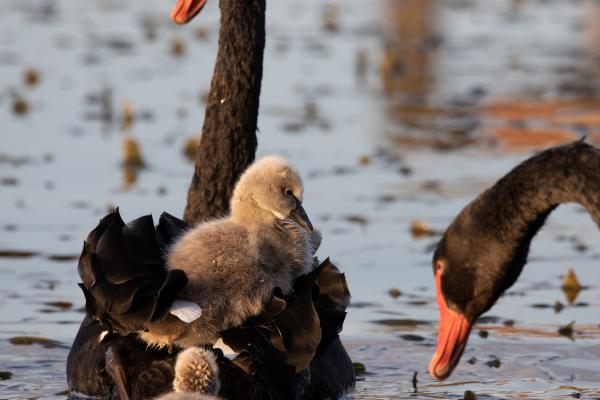by Moira Neagle
SWAMPS and drains are so common in our landscape that we may well take them for granted.
If this is the case, it is unfortunate as there are so many animal, insect, bird and water stories within them.
Our water combined with fertile soils, makes our part of the world so naturally rich and valuable.
Many of us who travel between Mount Gambier and Millicent will note the nesting of swans each year on a small swamp near the Kangaroo Flat Road.
They began their first nest some time ago and were flooded out.
I’m not sure if they are the same pair which nest their annually, but they persisted and built their nest again and must be getting close to hatching a family.
My husband took a photo of a swan and numerous cygnets in a drain two weeks ago.
Our son took a photo of them the following week and their growth in a week was prodigious.
There is something inherently lovely about observing young in the care of their parents.
There were parent swans and cygnets at Lake McIntyre a few weeks ago which attracted a lot of human interest.
We recently noted a pair of Mountain Duck in a swamp with a swarm of ducklings taking to the water.
Swamps provide habitat for birds which play a role in our agriculture through their consumption of insects.
Ibis can be seen nesting in their thousands on the edges of our largest swamps.
You will see them fly out to eat on grazing agricultural land through the day and fly back to their nests on evening.
A frog chorus in spring is another delight.
There is a swamp on the Millicent bypass which forms rings of colour as it dries over summer, creating a visual delight.
There are so many such wonders.
Moira is the Wattle Range Council Deputy Mayor and this column is her personal view and not necessarily that of the council.








